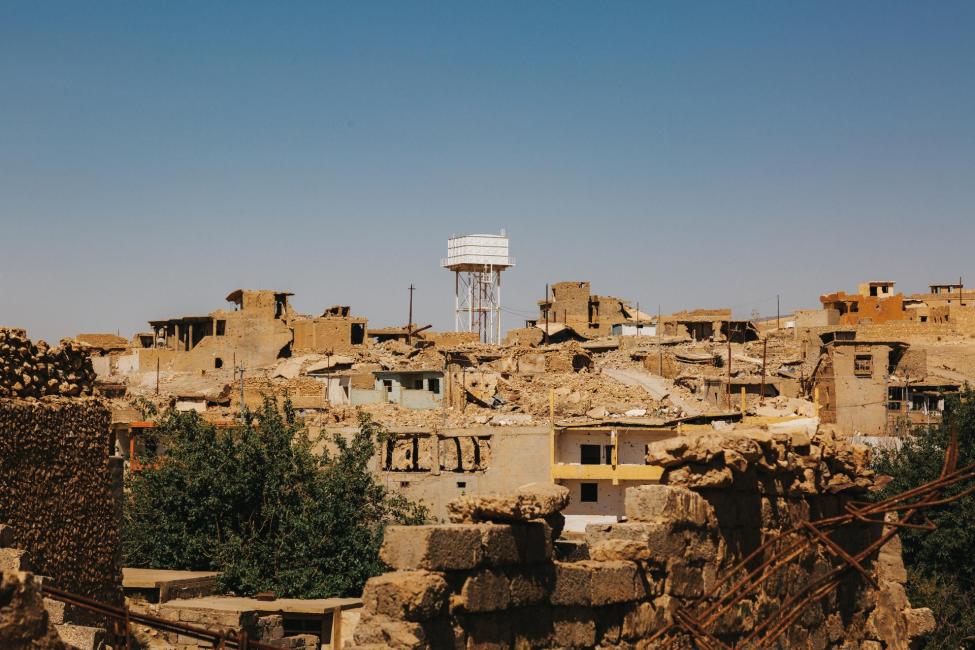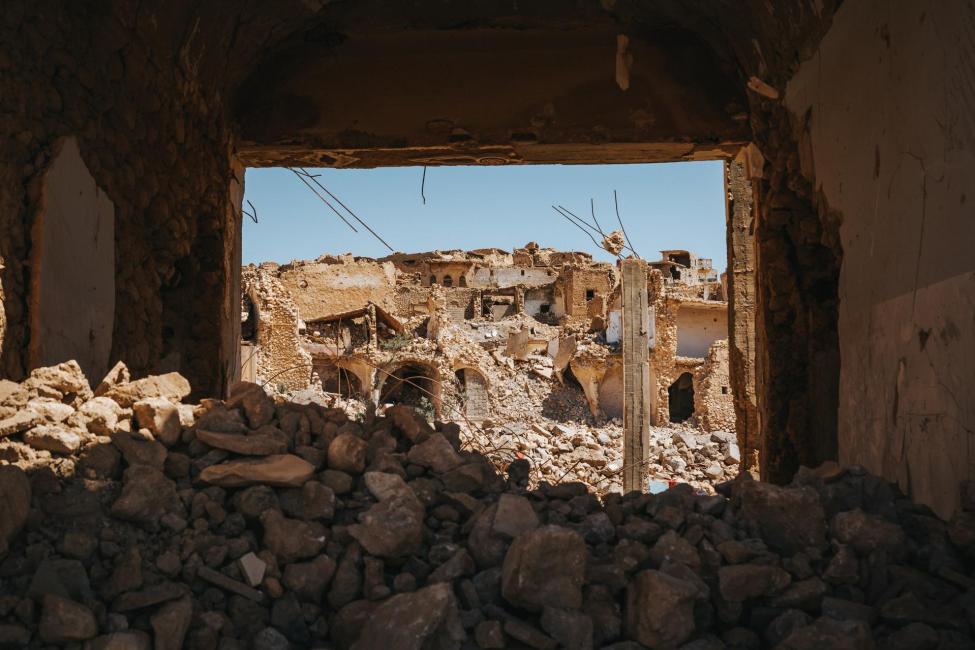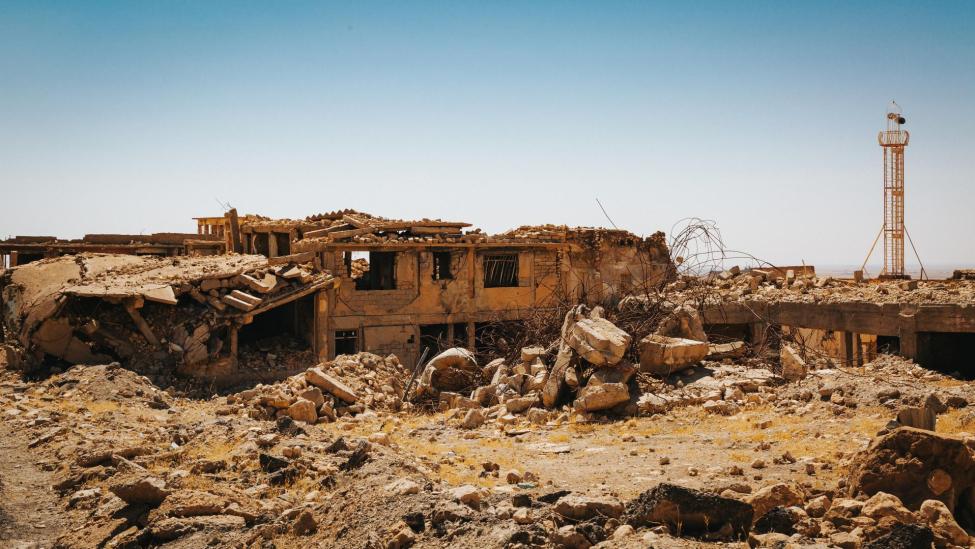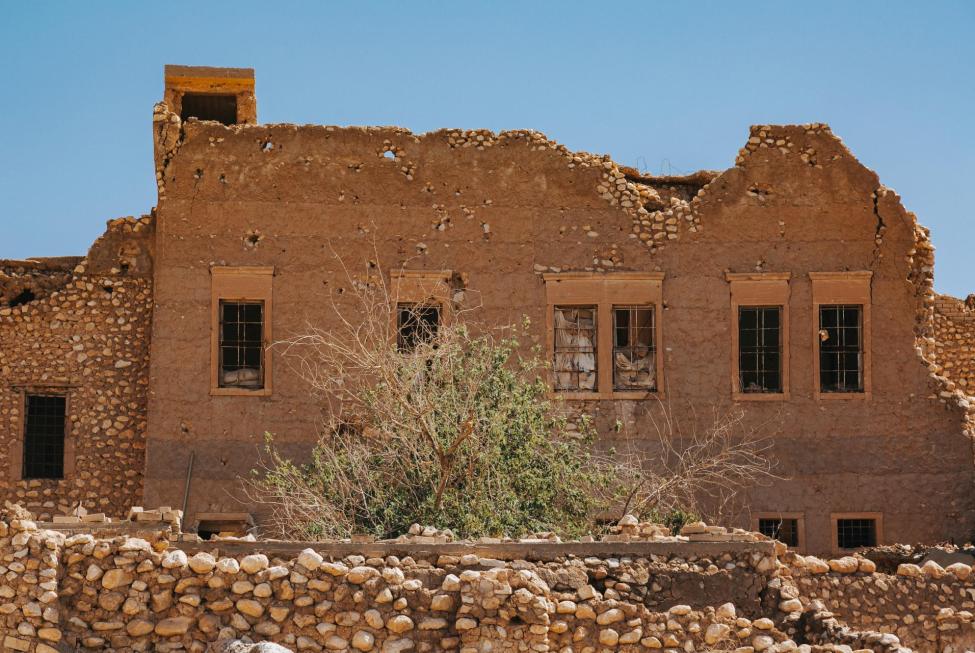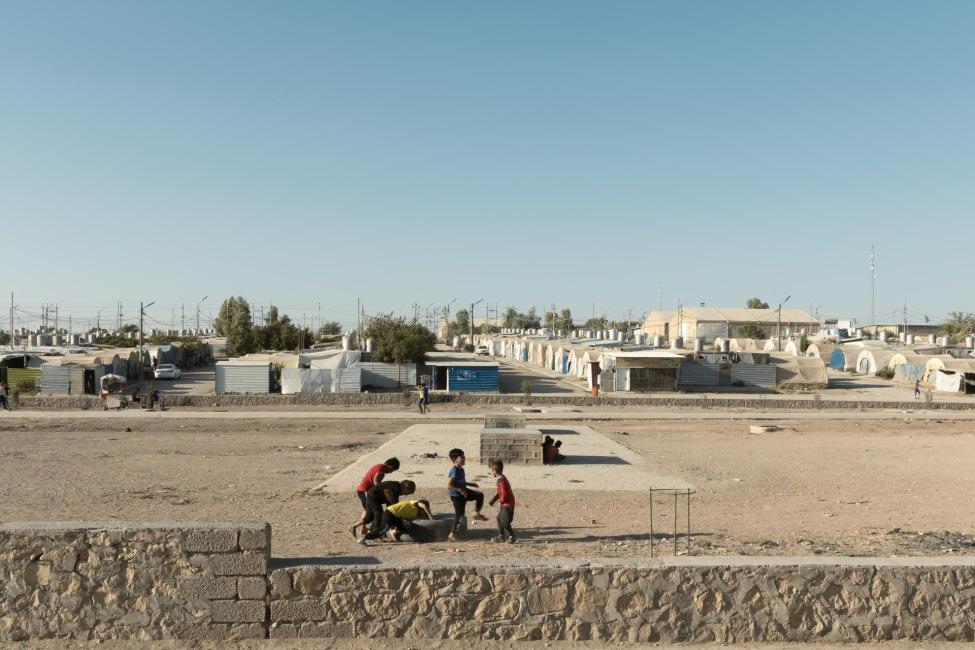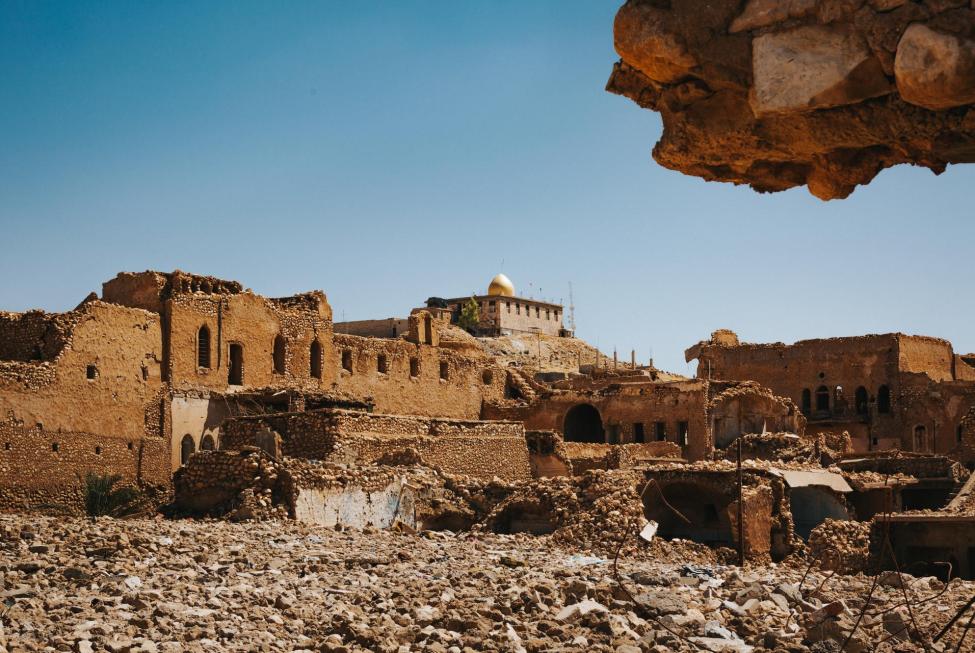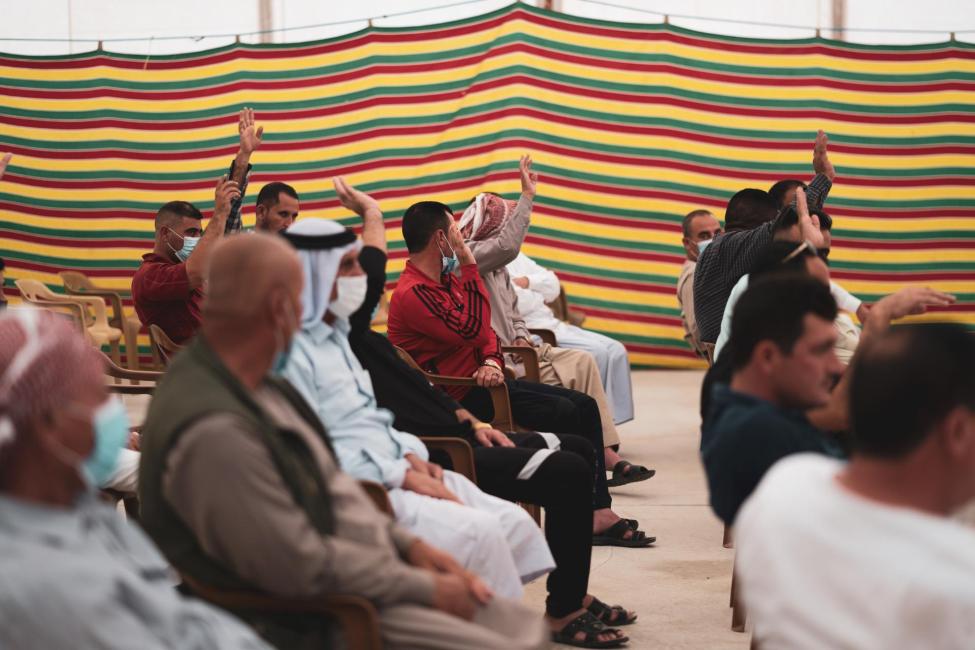-
Who We Are
WHO WE AREThe International Organization for Migration (IOM) is part of the United Nations System as the leading inter-governmental organization promoting since 1951 humane and orderly migration for the benefit of all, with 175 member states and a presence in over 100 countries. IOM has had a presence in Iraq since 2003.
About
About
IOM Global
IOM Global
-
Our Work
Our WorkAs the leading inter-governmental organization promoting since 1951 humane and orderly migration, IOM plays a key role to support the achievement of the 2030 Agenda through different areas of intervention that connect both humanitarian assistance and sustainable development. Across Iraq, IOM provides a comprehensive response to the humanitarian needs of migrants, internally displaced persons, returnees and host communities.
Cross-cutting (Global)
Cross-cutting (Global)
- Data and Resources
- Take Action
- 2030 Agenda
Today, August 3rd, marks eight years since the Islamic State of Iraq and the Levant (ISIL) launched its offensive in Sinjar — the beginning of its campaign of terror against the Yezidi population. Nonetheless, the question remains: how does a community continue on after experiencing genocide?
Sinjar is the ancestral homeland of Iraq’s Yezidis, a Kurdish-speaking minority that has long faced marginalization and persecution. The Yezidi history of resistance and resolute perseverance reached a terrible watershed when ISIL fighters arrived in the region’s golden, mountainous landscape in 2014. ISIL laid waste to thousands of lives, forcing thousands more to flee to the nearby Mount Sinjar — many died of exposure on the side of this mountain they consider sacred.
A walk around Sinjar today will find the old city in complete ruin, with only remnants of its once-vibrant life – an empty can of marinated grape leaves, a strewn deck of worn playing cards, a young child’s beloved blanket – scattered in the rubble.
Survivors’ lives have been irreparably changed by unimaginable horrors. Indeed, the mass executions, forced conversions, abduction and enslavement, systematic sexual violence and other heinous acts perpetrated by ISIL reflect a genocidal effort to destroy the Yezidi community.
Today, some 200,000 Yezidis are still living in displacement both in and out of camps across the Kurdistan Region of Iraq. Rates of return to Sinjar are currently among the lowest in the country, and the 42,000 people who have returned to the district continue to face immense challenges to rebuilding their lives.
Over 2,700 people remain missing; some are known to be in ISIL captivity, while the whereabouts of others is uncertain. Survivors – including Yezidis, but also members of the Shabak, Turkmen and Christian minorities – are unable to mourn lost family members, friends and neighbours, many of whom lie in unmarked and mass graves still awaiting exhumation eight years later. To know the fate of a deceased loved one, to lay them to rest and say goodbye, to have a place to visit and mourn – these are crucial steps in the healing process.
"The scale of the atrocities committed against the Yezidi community is such that it will have an impact on generations to come. The Government of Iraq and international community need to create conditions that will assure Yezidis that such atrocities will not happen again, and support them in healing and rebuilding their lives,” says Sandra Orlovic, Reparations Officer with the International Organization for Migration (IOM) in Iraq.
Efforts to identify and return remains must persist, alongside efforts to locate captive family members. For those who will never know the fate of their loved ones or be able to lay them to rest, memorialization efforts can offer some solace. Sustainable mental health services are also essential and in need of further investment to support survivors as they continue to process their individual and collective experiences and manage new realities.
What do those realities look like today?
With ISIL’s destruction of around 80 per cent of public infrastructure and 70 per cent of civilian homes in Sinjar City and surrounding areas, a lack of basic services and adequate shelter in areas of origin mean that achieving durable solutions to displacement for Yezidis who have returned and those who desire to do so is not easy. The area's infrastructure still lies in ruins, and resulting challenges in accessing running water, electricity, health care and education force families to focus on meeting their immediate needs rather than on meaningfully rebuilding their lives.
Though funding for humanitarian support like shelter assistance and basic service restoration is scaling down across Iraq, the need for such support remains urgent.
The restoration of housing, land and property documentation must also be prioritized as part of comprehensive support for durable solutions to Yezidi displacement. Without these documents, those who have returned to their homes are forced to live with the risk of being evicted at any moment, and face issues accessing shelter support and government compensation for their destroyed property.
Missing housing, land and property documents also limit livelihood prospects in Sinjar. Approximately 85 per cent of the region’s population led agriculture-based livelihoods before 2014, and without documentation to prove land ownership, families are denied access to their own property on which to farm. And as ISIL fighters wiped out Sinjar’s natural resources, sabotaged its irrigation canals and wells, stole or destroyed farming equipment and razed its farmland, Sinjari farmers who are legally able to access their land are not too much better off.
Yezidi civil society and community-based organizations have been hard at work reviving businesses and advancing Sinjar's reintegration into Iraq’s markets, and focused efforts to support women’s livelihoods are a mainstay of this work. Indeed, women face particularly complex barriers to financial independence – a problem made more dire by the high number of female-headed households created by the genocide – and IOM consultations with both displaced and returned Yezidi women reveal great concern over the severe lack of livelihood opportunities in camps and at home.
“Living costs are high during these difficult times,” says one Yezidi woman living in a Duhok camp for the internally displaced, “and when you have lost your husband who was the sole breadwinner of the family, when you’re not well yourself and you don’t have a stable source of income, life is simply excruciating.”
But there is another issue at play: security. If Yezidis aren’t safe in their own land and continue to live in fear that they might be targeted again, then efforts to support them are fundamentally incomplete.
Yezidi activists and civil society organizations have been working relentlessly to achieve safety and meaningful justice for their community, with groups like the Yazda-established Yezidi Survivors Network dedicating themselves to survivor-led self-determination efforts; promotion of accountability and the protection of human rights; and advocacy for survivors' services.
Scaling up support for groups such as these is absolutely critical, but in order to help create conditions for safety and healing, the international community must simultaneously support government bodies to fulfil their obligations to their citizens.
“I want the Iraqi government to take ownership of us as Iraqi citizens and support us financially so I can bring up my children with dignity,” says one Yezidi IDP in Duhok.
In a major milestone achieved through the hard work of Yezidi activists and civil society, with support from IOM Iraq, other international organizations and government partners, the Iraqi Council of Representatives adopted the Law on Yezidi Female Survivors in March 2021, officially recognizing ISIL’s acts of genocide against Yezidis and other minority groups and establishing a framework for the provision of financial support and other forms of reparations to survivors. These include a monthly salary, shelter and education assistance, access to health and mental health services and more.
The newly established General Directorate of Survivors' Affairs is tasked with implementing the law’s stipulations.
“The General Directorate of Survivors’ Affairs has been opened in Mosul, and we are about to open a branch in Sinjar district in the next few days with the support of USAID and Nadia’s Initiative,” says Sarab Alias, the Directorate’s Director General. “The Directorate is working intensively and with all efforts to start the process of registering the survivors.”
For this, she continues, “[The Directorate] needs concerted efforts and support from all parties – both governmental and international, and including international and local civil society organizations – in the current period. Support is needed to train the Directorate’s staff; increase their capabilities and capacities; provide them with the expertise required to deal with [sensitive files related to sexual violence and crimes against children]; prepare them to provide care to survivors and other groups covered by the law; and avoid retraumatizing them during the application process.”
Directorate staff plan to engage directly with survivors and affected communities, spreading awareness and taking on the gathering of evidence to help relieve the burden from survivors themselves. Such direct engagement is particularly important with the prevalence of misinformation currently circulating about the laws.
“NGOs are an important link to the survivors and are often their first point of contact,” explains Sherizaan Minwalla, human rights lawyer and expert in the rule of law, gender-based violence and ethical documentation of sexual violence in conflict. “It's essential that they commit to ‘do no harm’ principles, and also that, if they are going to do outreach on the law, they know what they are talking about, so they are not another source of misinformation. They should also be funded to help survivors to submit applications,” she adds.
Though great and even ground-breaking progress has indeed been made over the last eight years in support of survivors of ISIL’s genocide, conditions are still not sufficient for them to heal and rebuild.
We ask again: how does a community continue on after experiencing genocide? There are no clear-cut answers to this question, but by investing further in building capacity at the national and local levels to meet the material, physical and psychological needs of survivors, the international community can help to create the ripe conditions for those Yezidis, Shabak, Turkmen and Christians leading the charge.
*Names of survivors have been omitted to protect their identities
